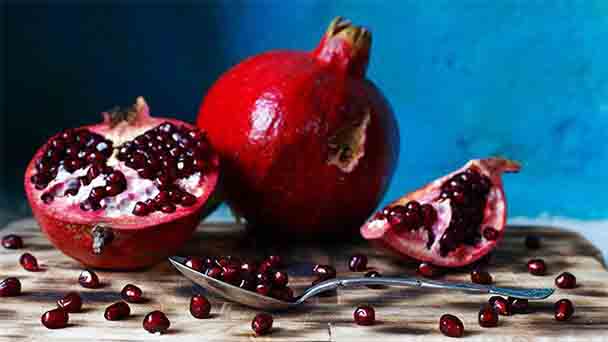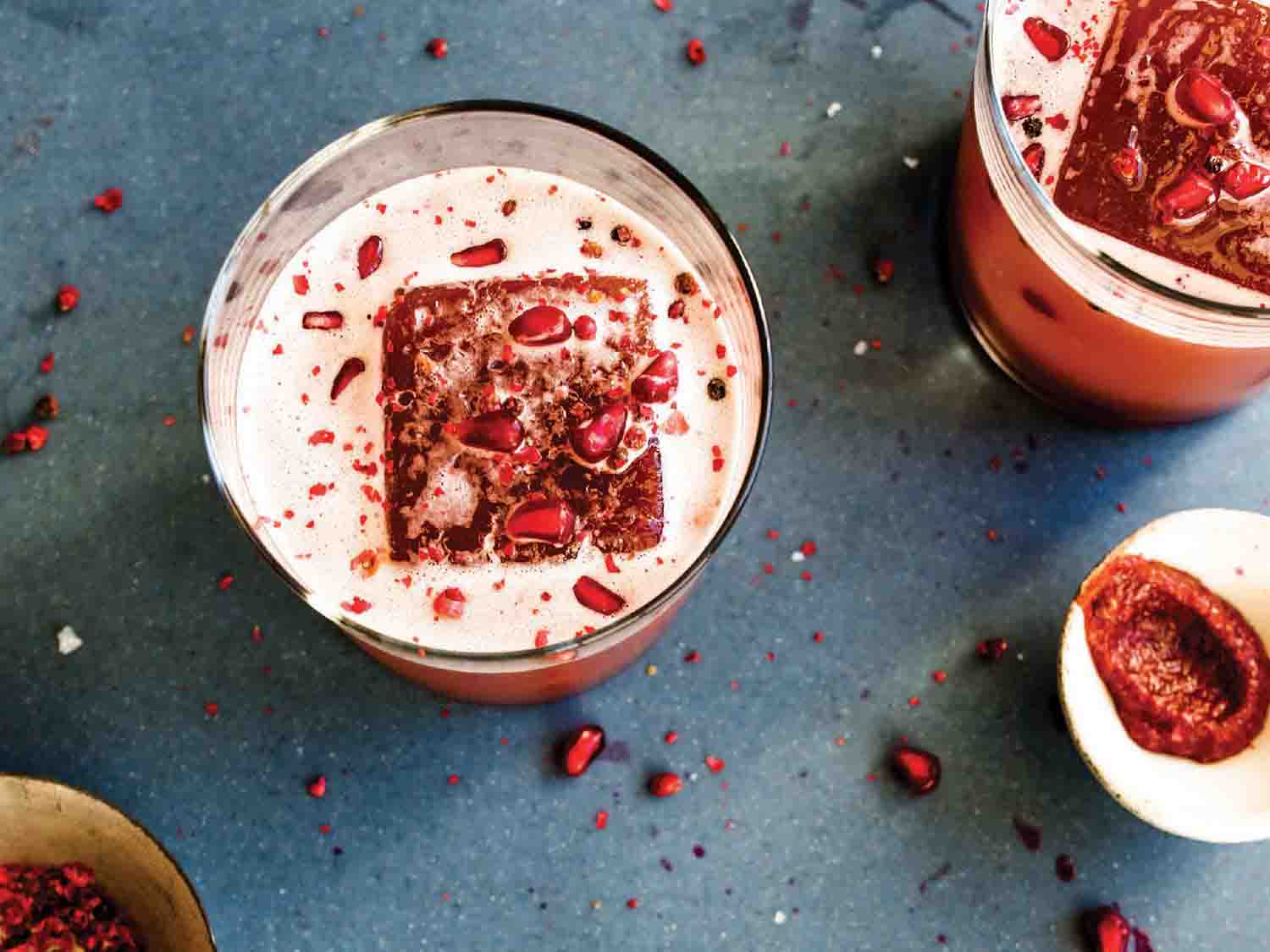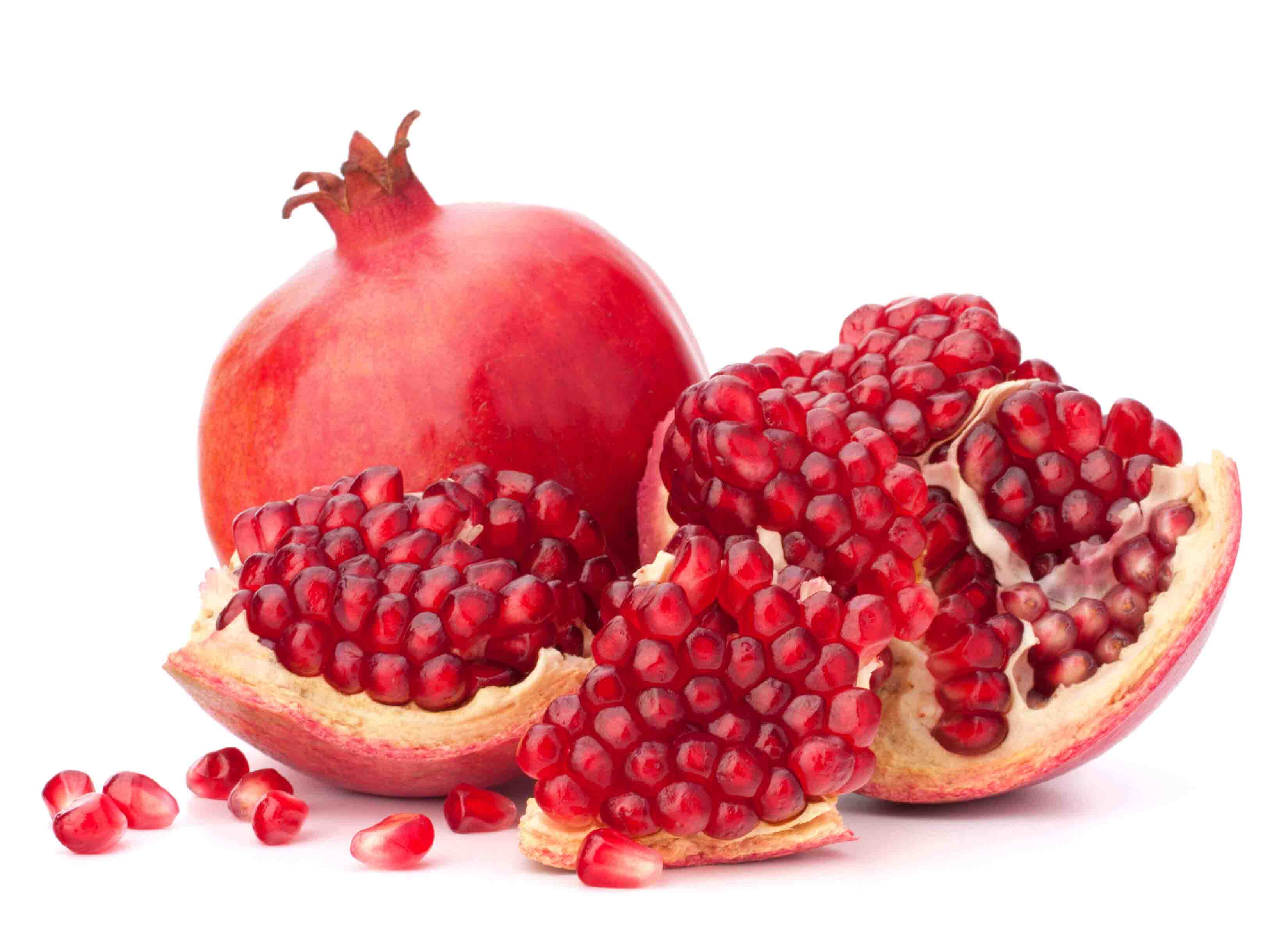Pomegranate Profile
Written by Joy
Nov 06 2020

Pomegranate is a deciduous tree or shrub; simple leaves, usually opposite or clustered, without stipules. The flowers of pomegranate are terminal or near the terminal, solitary or several clusters or form cymes, nearly bell-shaped, lobes 5-9, petals 5-9, many folds, arranged in tile-like arrangement; ovules are numerous. The berry is spherical, with persistent calyx lobes at the top, and thick peel. The pomegranate has more seeds, and the berries are nearly spherical. The ripening period of pomegranate is September to October. The testa flesh is translucent. The pomegranate is juicy and the inner seed is leathery.
Pomegranate morphological characteristicsPomegranate growth habit and growing environment and distributionPomegranate efficacy and roleThe nutritional value of pomegranateThe ornamental value of pomegranatePomegranate cultivationPlantingIlluminationFertilizePruneHarvest
Pomegranate is sweet, sour and warm in nature, and has the effects of killing insects, astringent, astringent intestines, and diarrhea. Pomegranate fruit is rich in nutrients, and its vitamin C content is one or two times higher than that of apples and pears.The history of pomegranate cultivation in China can be traced back to the Han Dynasty. According to Lu Gong's record, Zhang Qian introduced it from the Western Regions. It is cultivated in both north and south of China, with large planting areas in Anhui, Jiangsu, Henan and other places, and some high-quality pomegranate varieties have been cultivated.
Pomegranate morphological characteristics

The leaves of pomegranate are opposite or clustered, long lanceolate to oblong, or oval-lanceolate, 2-8cm long, 1-2cm wide, pointed at the top, shiny on the surface, and raised midrib. Pomegranates have short petioles.
The flowers are bisexual, depending on whether the ovary is developed or not, there are bell-shaped flowers and tube-shaped flowers. The former has a developed ovary and is good at fertilization, while the latter is often withered and shattered. Generally, 1 to several flowers is born at the top of the new shoots of the year. Leaf axils below tip; sepals are hard, fleshy, tubular, 5-7 split, connected to the ovary. The petals of the pomegranate are obovate, alternate with the sepals in the same number, and arranged in a tile-like pattern. Flowers are divided into single and double petals. Double-petaled varieties have multiple pistils and stamens, with as many as dozens of petals. The flowers are mostly red, and also have white, yellow, pink, and agate colors. Many stamens, filaments glabrous. The pistil of pomegranate has one style, which is longer than the stamen, the carpel is 4-8, and the ovary is inferior.

Pomegranate growth habit and growing environment and distribution
Pomegranate originates from the Balkan Peninsula to Iran and its neighboring regions and is cultivated in temperate and tropical regions all over the world.There are also a large number of wild ancient pomegranate communities on the barren slopes on both banks of the Chayu River at an altitude of 1700-3000 meters in the Sanjiang River Basin in China. It is cultivated in both north and south of China. The planting area is larger in Jiangsu and Henan, and some better varieties have been cultivated. Among them, the crystal pomegranate and small fruit pomegranate in Jiangsu are better varieties.
The pomegranate is born on a mountain at an altitude of 300-1000 meters. Like a warm and sunny environment, it is resistant to drought, cold, barrenness, waterlogging, and shade. The soil requirements are not strict, but sandy soil with good drainage is suitable for cultivation.
Pomegranate efficacy and role
The nutritional value of pomegranate

Pomegranate contains a variety of nutrients: 17% carbohydrates, 79% moisture, 13%-17% sugars. The content of vitamin C is 1-2 times higher than that of apples, while the content of fat and protein is less.
Pomegranate is the fruit of the pomegranate plant in the pomegranate family. It was originally produced in the Western Regions and was introduced to China during the Han Dynasty. There are mainly different varieties of agate pomegranate, pink-skinned pomegranate, green-skinned pomegranate, and jade. Ripe pomegranate skin is bright red or pink, and it often splits, revealing crystal-like gem-like grains, sweet and sour and juicy. Although it is troublesome to eat, it is the endless aftertaste. Because of its bright colors and fullness, it is often used as a festive fruit, which symbolizes many children, many children and a full house. Pomegranate matures during the Mid-Autumn Festival and National Day. It is a festive and auspicious gift to relatives and friends, and it can also eliminate the obstacles to women's menopause.
The ornamental value of pomegranate

Pomegranate cultivation
Planting
It can be planted or potted after falling leaves in autumn and before budding in the following spring. The ground should be planted in a sunny, leeward, slightly higher place, and the soil should be loose, fertile, and well-drained. For pomegranate potted plants, choose the cultivating soil mixed with leaf mulch, garden soil and river sand, and add the proper amount of decomposed organic fertilizer. When planting, bring soil mass, appropriate short-cut pruning of the ground part, water thoroughly after planting, and keep it in the shade. After the pomegranate germinates, move it to a ventilated and sunny place.Illumination
Light and temperature are important conditions that affect the formation of pomegranate flower buds. The growing period requires full daylight, and the more light, the more flowers and brighter they are. A leeward, sunny, and dry environment is conducive to flower bud formation and flowering. When the light is insufficient, only leaves will grow without flowering, which will affect the viewing effect. The suitable growth temperature for pomegranate is 15-20℃, and the temperature in winter should not be lower than -18℃, otherwise, it will suffer freezing damage.Fertilize

Prune
Pomegranates need to be pruned every year. You can trim the pomegranate into a single round head shape, or multiple stems to form it, or you can force it to trim it into a dwarfed flat head crown. In the fruiting period, the extra-long branches should be topped in summer and short-cut after autumn to avoid secondary and tertiary branches at the top, so that they can store nutrients in order to form the fruiting female branches in the next year. At the same time, they should cut off the rhizosphere in time. Cute tiller.Harvest
Pomegranate blooms 3 times a year, so there are 3 times of fruit. Generally, the first flower or the second flower develops well. It should be harvested in time according to the various characteristics, fruit maturity and climate conditions. The signs of pomegranate fruit ripeness are:⑴ The peel changes from green to yellow, the colored varieties are fully colored, and the fruit surface appears shiny.
⑵ Fruit edges appear.
⑶ The red or silver-white needle awns in the pulp cells are fully revealed.
⑷The grains are full, and the soluble solid content of the fruit juice reaches the inherent concentration of the variety. The ripe fruit is harvested before the rain, and harvesting is prohibited in rainy weather.
Pomegranate seedlings propagated by cuttings or ramets will begin to bear fruit after 3-4 years of planting, while seedlings propagated by seeds will take more than 10 years to bloom and bear fruit.
Latest Updated
- Benefits of Bugleweed - 7 Science-backed Health Benefits
- Bugleweed Dangers & Side Effects - Is It Poisonous?
- How to Plant Evergreen Trees - What You Should Know
- When to Plant Evergreens - Grow Guide for Evergreen Trees
- 12 Wonderful Evergreen Shrubs for Your Garden
- 12 Popular Evergreen Plants with Pictures for Beginners
- When And How To Prune A Lilac Bush Like a Pro
- How to Grow & Care for Lilac Vine (Hardenbergia Violacea)
- Japanese Lilac Tree (Syringa Reticulata) Care & Propagation Guide
- Shumard Oak Pros and Cons - What to Know
Popular Articles
- Winter maintenance of Antirrhinum Majus
- How to Grow Terminalia Mantaly Tree
- How to Grow and Care for Crossostephium Chinense
- How to grow Antirrhinum Majus in spring
- Peristeria Elata (Dove Orchid) Profile: Info & Care Guide
- Underwatered Snake Plant (Sansevieria Trifasciata) - Signs And How To Fix
- How to Care for Brazilian Jasmine Plant (Mandevilla Sanderi)
- How to Grow & Care for Graptopetalum Purple Delight in Summer
- Rosa Chinensis (China Rose): Plant Growing & Care Tips
- How to Care for Baby Sun Rose (Aptenia Cordifolia)